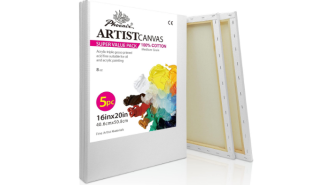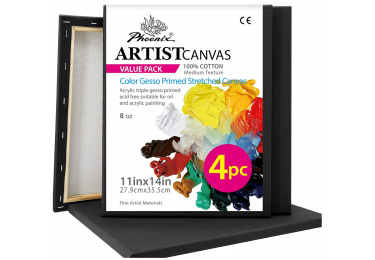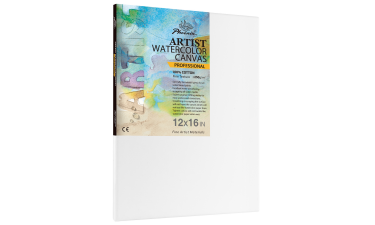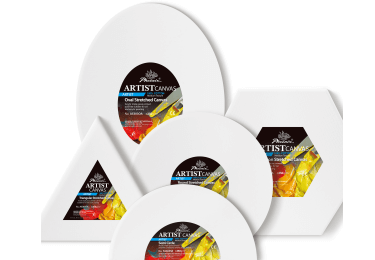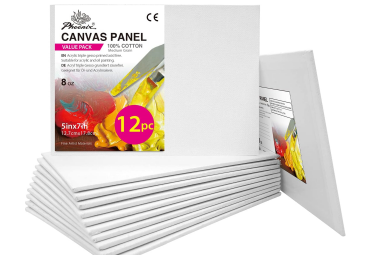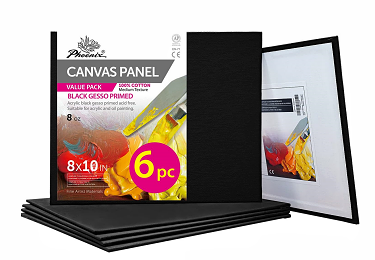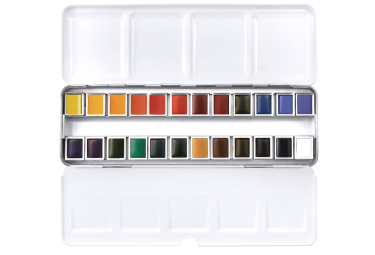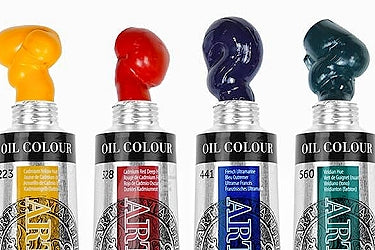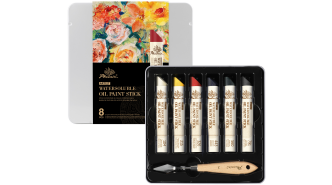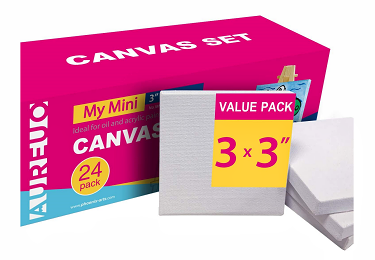What Is a Paint Board?
A paint board is a firm, flat surface used by artists as an alternative to stretched canvas or traditional drawing paper. Typically made from materials like wood, MDF, or canvas-covered hardboard, paint boards offer a rigid support that’s ideal for various media—especially acrylics and oils. Unlike flexible canvases, which are stretched over frames, paint boards remain flat and stable, making them a popular choice for artists seeking durability and control in their work.
One of the most common beginner questions is: what is the board that artists use to paint on? Or even more simply—what do painters paint on if not canvas? While stretched canvas remains a go-to for many, more and more artists are turning to paint boards for their solid surface, portability, and ease of storage. Paint boards are also ideal for sketching, practice studies, or works where brush precision is key.
Whether you’re experimenting with brushwork, working outdoors, or creating on-the-go, a paint board offers a reliable, practical surface that adapts to your artistic needs.
Types of Paint Boards Used by Artists
Choosing the right paint board means understanding the surface beneath your brush. At Phoenix, we offer three essential types of painting boards—each designed for specific techniques, levels of preparation, and artistic intent.
Canvas Board: Fabric Texture on a Rigid Backing
Canvas boards are made by mounting primed cotton or linen fabric onto a stiff backing, typically cardboard or composite board. This structure offers the familiar texture of canvas in a more portable and affordable format. Ideal for acrylics and oils, canvas boards are perfect for daily practice, student work, or plein air painting—whenever flexibility and convenience matter. Unlike gesso boards, canvas boards retain the fabric weave texture, adding a tactile quality to your brushstrokes.
Gesso Board: Smooth, Pre-Primed, and Studio-Ready
Gesso boards feature a smooth hardboard surface treated with multiple layers of white gesso. This creates a consistent, non-textured base that excels in detailed, layered work. Artists who value flatness, precision, and color clarity often choose gesso boards for studio painting, especially with acrylics or mixed media. The surface absorbs evenly and eliminates the need for pre-treatment.
Wood Painting Board: Raw Surface for Custom Preparation
Sometimes referred to as hardboard or raw wood panel, this type is left untreated—offering artists total freedom to prepare the surface as they wish. Whether you're applying your own gesso, experimenting with absorbent grounds, or embracing the natural wood grain in your work, this surface supports full customization. Wood painting boards are best suited for experienced artists or those who prefer building their ground from scratch.
Each of these paint board types serves a different creative purpose. By understanding their construction and intended use, you can better match your surface to your medium, method, and vision.
Types of Paint Boards and Who They're Best For?
| Type of Paint Board | Description | Best for | Common Uses |
| Canvas Board | A canvas surface mounted on stiff backing; lightweight and usually pre-primed. |
Beginners, students, hobby artists |
Practice painting, quick studies, affordable projects |
| MDF Board | Smooth, dense fiber board offering a solid flat surface with no texture. |
Detail-oriented painters, acrylic artists, illustrators |
Precise brushwork, studio painting, layering |
| Wood Panel | Natural wood surface (e.g. birch), either cradled or flat. |
Professional artists, gallery-level work, oil painters |
Fine art, archival work, layered oil painting |
| Artists' Drawing Board | Flat board surface used for sketching or mixed media drawing |
Sketch artists, mixed media creators |
Charcoal, pencil, ink, graphite, planning compositions |
Paint Board vs. Stretched Canvas: Which Surface Suits Your Style?
One of the most common questions artists ask is: Should I choose a paint board or a stretched canvas?
While both are popular painting surfaces, they offer very different experiences in texture, tension, and handling.
Paint boards—including canvas boards, gesso boards, and raw wood painting boards—are rigid and stable. Their firm surface doesn‘t flex under your brush, making them ideal for techniques that require control: fine lines, texture building, or knife work. Among these, canvas boards offer the added benefit of traditional canvas texture with enhanced portability.
In contrast, a stretched canvas introduces a gentle spring or bounce with each brushstroke. This tension can influence how your paint lands on the surface, especially in expressive or gestural techniques. Many artists associate stretched canvas with formal, long-term projects and gallery-ready presentation.
When deciding between the two:
Do I want maximum surface control—or the dynamic feedback of stretched fabric?
Will this piece travel with me, or hang in a fixed space?
Is this a quick study or a final work?
Choosing the right surface isn’t about which one is better—it’s about which one helps you express your idea more naturally.
Choosing a Paint Board: Phoenix Options to Consider
If you're looking for a paint board that balances structure, ease of use, and accessibility, Phoenix offers several surfaces suited to different needs and working styles.
For artists needing more support, MDF painting panels provide a denser, smoother surface. These are well-suited to techniques requiring precision or layering, including glazing and detailed brushwork. Some models feature cradled edges to prevent warping, especially in humid environments or larger sizes.
Whether you're painting in acrylics, oils, watercolor or experimenting with mixed media, choosing the right surface can support—not hinder—your technique. Rather than offering a one-size-fits-all solution, we aim to provide a range of paint boards so you can work the way you want, wherever you are.
Frequently asked about Paint board
Can you use acrylic paint on a paint board?
Yes. Most paint boards for acrylic are pre-primed with acrylic gesso and ready to use straight out of the package. Their non-flexing surface makes them ideal for acrylics, especially when working with layering or texture techniques.
What size paint board should a beginner use?
Beginners often start with smaller formats, such as 8"x10" or 9"x12", because they are easier to manage and less intimidating. Many students use canvas boards for practice and classwork before transitioning to stretched canvas or larger formats.
Can I reuse a paint board?
If you’re using acrylic or oil, some paint boards can be reused after sanding down or applying a fresh coat of gesso. However, for best results, it’s recommended to treat each new work with a clean, primed surface.
Is a paint board suitable for professional artwork?
Absolutely. Many artists use wood painting panels or cradled MDF boards for professional commissions and gallery pieces. The key is to choose a surface that’s properly prepared, stable, and matches your medium.
Do paint boards warp over time?
High-quality artist boards for painting are designed to resist warping, especially cradled panels or thicker MDF options. However, very thin or poorly stored boards may show signs of bending, especially in humid environments.

